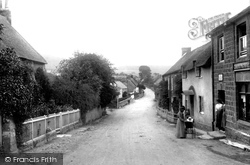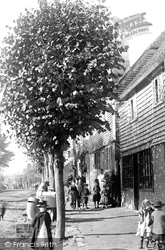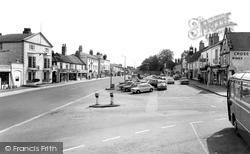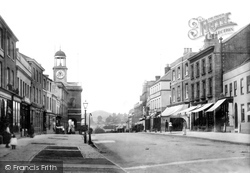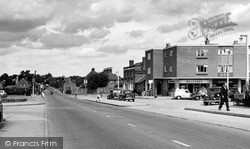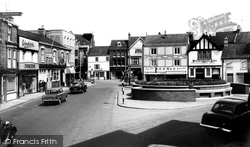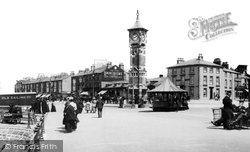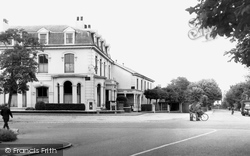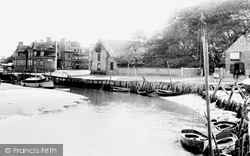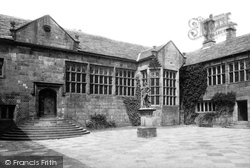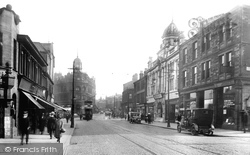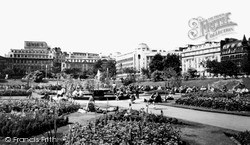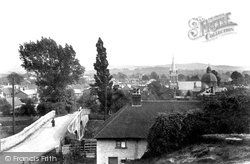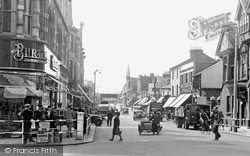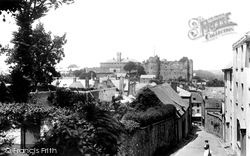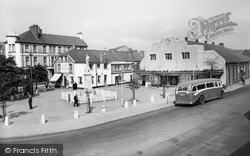Places
36 places found.
Those places high-lighted have photos. All locations may have maps, books and memories.
- Pentre-cwrt, Dyfed
- Pentre Halkyn, Clwyd
- Pentre, Mid Glamorgan
- Ton Pentre, Mid Glamorgan
- Pentre, Powys (near Llangynog)
- Pentre, Powys (near Guilsfield)
- Pentre, Powys (near Bishop's Castle)
- Pentre, Clwyd (near Mold)
- Pentre, Clwyd (near Ruabon)
- Pentre, Shropshire (near Chirk)
- Pentre, Clwyd (near Hawarden)
- Pentre, Dyfed (near Pontyates)
- Pentre, Powys (near Newtown)
- Pentre, Clwyd (near Chirk)
- Pentre, Clwyd (near Ruthin)
- Pentre, Clwyd (near Mold)
- Pentre, Shropshire (near Oswestry)
- Pentre, Powys (near Welshpool)
- Pentre, Clwyd (near Mold)
- Pentre, Shropshire (near Forton)
- Burntwood Pentre, Clwyd
- Pentre Berw, Gwynedd
- Pentre Hodre, Shropshire
- Pentre Llanrhaeadr, Clwyd
- Pentre-celyn, Clwyd
- Pentre Broughton, Clwyd
- Pentre Gwynfryn, Gwynedd
- Pentre Maelor, Clwyd
- Pentre-clawdd, Shropshire
- Pentre Galar, Dyfed
- Pentre Llifior, Powys
- Pentre-cefn, Shropshire
- Pentre-Gwenlais, Dyfed
- Pentre-Poeth, Dyfed
- Pentre Cilgwyn, Clwyd
- Pentre Morgan, Dyfed
Photos
98 photos found. Showing results 2,721 to 98.
Maps
316 maps found.
Books
2 books found. Showing results 3,265 to 2.
Memories
1,250 memories found. Showing results 1,250 to 1,250.
Captions
3,594 captions found. Showing results 3,265 to 3,288.
During the 19th century the town centre had shifted westwards to the Bridge and Park Street.
Beyond are an obscured Bridge Cottage, By the Stream , and Apple Tree Thatch (centre).
home ground is in nearby Cuckfield, which is also used by athletes from the Haywards Heath Harriers during the summer months - during the winter they use the facilities at Oathall Community Centre
Burwash was a centre for Sussex iron making. After the iron industry ceased production, the locality was less prosperous; the common became notorious for 18th-century lawlessness.
Bawtry Hall, now a religious centre, was the wartime HQ of No 1 Bomber Command.
At the centre is Christ Church, dating from 1693, and rebuilt in 1803 to incorporate the Library and Institute. The Tudor-style building on the left has had many uses, and is now an estate agent.
This view shows the western end of East Street, with a closer look at the Town Hall clock-tower and cupola, and Colmer`s Hill forming the conical eminence in the distance (centre).
The Red Lion next to Prentice Place (centre right) has 17th- and 18th-century features behind later additions. During the Second World War, the Red Lion was an ARP post.
The 18th-century Tivoli Tavern (the white building, centre left), formerly the Globe, is still there, but the buildings on the left are no more, having being replaced by Devonshire House.
These opposing views of the town centre illustrate the character and quality of life in Aspley Guise.
On non-market days, the centre of St Ives was a quiet and unhurried place.
This is the area which was at the entrance to Central Pier; at this time it was the centre for visitors in Morecambe. This is reflected by the number of dining rooms we can see on our photograph.
It can now be found in the open area in front of the Brewery Arts Centre in Kendal.
The junction is now notorious for its off-centre mini-roundabout.
They take place around the Palladian-style market cross which is in the centre of five main roads.
Trading from its port ended in 1922, and this heralded the start of Blakeney as a tourist centre, specialising in boating, fishing, walking, painting, bird-watching and nature study.
In the 18th century, the village of Hoghton was a centre of handloom weaving, and the almost derelict Hoghton Tower was let as tenements; but it is now well restored and popular with tourists, many from
This used to be a centre for entertainment, with the old Theatre Royal (1868) on the left - it was later a cinema from 1921.
The dome of the Infirmary is on the left, and Lewis's tower is in the centre.
In the centre but more distant, the 900-year-old St Peter's can be seen.
the Wheatsheaf of 1900 on the right survives as an O'Neills pub, and so does the former Burton's on the opposite corner, but most of the right-hand buildings have gone for the Belfry Shopping Centre
The gateway in the stone wall (centre left) is now a garage door. The Millar Tobacconist at the foot of the hill beyond the horse and cart is now Castle Photography.
The war memorial (centre left) commemorates the Royal Welsh Fusiliers of two World Wars so that 'their names will live for evermore'.
During the 19th and early 20th centuries, Staithes was a fishing port of some standing, a centre for cod, haddock and mackerel, but it fell into decline with the development of steam trawlers, which tended
Places (57)
Photos (98)
Memories (1250)
Books (2)
Maps (316)


